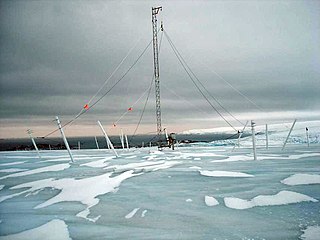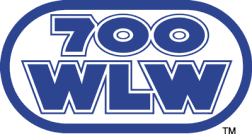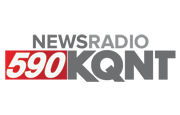Related Research Articles

AM broadcasting is radio broadcasting using amplitude modulation (AM) transmissions. It was the first method developed for making audio radio transmissions, and is still used worldwide, primarily for medium wave transmissions, but also on the longwave and shortwave radio bands.

Very low frequency or VLF is the ITU designation for radio frequencies (RF) in the range of 3–30 kHz, corresponding to wavelengths from 100 to 10 km, respectively. The band is also known as the myriameter band or myriameter wave as the wavelengths range from one to ten myriameters. Due to its limited bandwidth, audio (voice) transmission is highly impractical in this band, and therefore only low-data-rate coded signals are used. The VLF band is used for a few radio navigation services, government time radio stations and secure military communication. Since VLF waves can penetrate at least 40 meters (131 ft) into saltwater, they are used for military communication with submarines.

Medium frequency (MF) is the ITU designation for radio frequencies (RF) in the range of 300 kilohertz (kHz) to 3 megahertz (MHz). Part of this band is the medium wave (MW) AM broadcast band. The MF band is also known as the hectometer band as the wavelengths range from ten to one hectometers. Frequencies immediately below MF are denoted as low frequency (LF), while the first band of higher frequencies is known as high frequency (HF). MF is mostly used for AM radio broadcasting, navigational radio beacons, maritime ship-to-shore communication, and transoceanic air traffic control.

In radio, longwave, long wave or long-wave, and commonly abbreviated LW, refers to parts of the radio spectrum with wavelengths longer than what was originally called the medium-wave broadcasting band. The term is historic, dating from the early 20th century, when the radio spectrum was considered to consist of longwave (LW), medium-wave (MW), and short-wave (SW) radio bands. Most modern radio systems and devices use wavelengths which would then have been considered 'ultra-short'.
A clear-channel station is a North American AM radio station that has the highest level of protection from interference from other stations, particularly from nighttime skywave signals. This classification exists to ensure the viability of cross-country or cross-continent radio service enforced through a series of treaties and statutory laws. Known as Class A stations since the 1983 adoption of the Regional Agreement for the Medium Frequency Broadcasting Service in Region 2, they are occasionally still referred to by their former classifications of Class I-A, Class I-B, or Class I-N. The term "clear-channel" is used most often in the context of North America and the Caribbean, where the concept originated.
Multichannel Television Sound (MTS) is the method of encoding three additional audio channels into analog 4.5 MHz audio carriers on System M and System N.The system was developed by an industry group known as the Broadcast Television Systems Committee (BTSC), a parallel to color television's National Television System Committee, which developed the NTSC television standard.
AM stereo is a term given to a series of mutually incompatible techniques for radio broadcasting stereo audio in the AM band in a manner that is compatible with standard AM receivers. There are two main classes of systems: independent sideband (ISB) systems, promoted principally by American broadcast engineer Leonard R. Kahn; and quadrature amplitude modulation (QAM) multiplexing systems.

WLW is a commercial news/talk radio station licensed to Cincinnati, Ohio. Owned by iHeartMedia, WLW is a clear-channel station, often identifying itself as “The Big One”. Its studios are located in Sycamore Township.

FM broadcasting is a method of radio broadcasting that uses frequency modulation (FM) of the radio broadcast carrier wave. Invented in 1933 by American engineer Edwin Armstrong, wide-band FM is used worldwide to transmit high-fidelity sound over broadcast radio. FM broadcasting offers higher fidelity—more accurate reproduction of the original program sound—than other broadcasting techniques, such as AM broadcasting. It is also less susceptible to common forms of interference, having less static and popping sounds than are often heard on AM. Therefore, FM is used for most broadcasts of music and general audio. FM radio stations use the very high frequency range of radio frequencies.
The 80 meter or 3.5 MHz band is a span of radio frequencies allocated for amateur use, from 3.5–4.0 MHz in North and South America ; generally 3.5–3.8 MHz in Europe, Africa, and northern Asia (Region 1); and 3.5–3.9 MHz in south and east Asia and the eastern Pacific (Region 3). The upper portion of the band, which is usually used for phone (voice), is sometimes referred to as 75 meters; however, in Europe, "75 m" is used to name an overlapping shortwave broadcast band between 3.9–4.0 MHz used by a number of national radio services.

WBBM – branded Newsradio 780 WBBM – is a commercial all-news AM radio station licensed to serve Chicago, Illinois. Owned by Audacy, Inc., its studios are located at Two Prudential Plaza in the Chicago Loop, while the station's transmitter—diplexed with sister station WSCR—is in the nearby suburb of Bloomingdale.

KQNT is a commercial radio station licensed to Spokane, Washington. It is one of the oldest radio stations in Washington, going on the air in 1922 in Seattle. KQNT offers a news/talk format and is owned by iHeartMedia, Inc. The studios and offices are on East Sprague Street in Spokane.

The extended mediumwave broadcast band, commonly known as the AM expanded band, refers to the broadcast station frequency assignments immediately above the earlier upper limits of 1600 kHz in International Telecommunication Union (ITU) Region 2, and 1602 kHz in ITU Regions 1 and 3.

WLLH is a commercial radio station in Lawrence, Massachusetts, serving the Merrimack Valley region. The station is owned by Gois Broadcasting, LLC, and airs a tropical music radio format. The transmitter site is on Common Street, near the Lawrence Police Department Headquarters.

WIOU is a commercial AM radio station in Kokomo, Indiana. It is owned by Hoosier AM/FM LLC, with studios and offices on Indiana State Road 26 in Kokomo. It broadcasts a sports radio format, mostly from ESPN Radio.
KKOL is an AM radio station in Seattle, Washington. It is owned by Salem Media Group. It airs a conservative talk radio format, branded as "1300 The Answer," featuring nationally syndicated Salem Radio Network hosts including Dennis Prager, Mike Gallagher, Sebastian Gorka, Hugh Hewitt, Brandon Tatum and Charlie Kirk. The radio studios and offices are on Fifth Avenue South. KKOL is the oldest radio station in Seattle, first licensed on May 23, 1922.

WMLB is an expanded band radio station licensed to Avondale Estates, Georgia, and serving the Metro Atlanta radio market. The station broadcasts with 10,000 watts daytime and 1,000 watts at night.
KSMH is a radio station broadcasting a Catholic religious radio format as a member of the Relevant Radio network. Licensed to West Sacramento, California, United States, it serves the Sacramento metropolitan area. The station is owned by Relevant Radio, Inc.

KTWO is an American AM radio station licensed to Casper, Wyoming. KTWO broadcasts a 50,000-watt signal from a two-tower facility located east of Casper near Hat Six Road. The station is directional at night to protect WBZ in Boston. The station features several talk shows such as The Sean Hannity Show and Coast to Coast AM.

KOFI is a commercial radio station licensed to Kalispell, Montana, and owned by KOFI, Inc. It airs an oldies radio format with some news, talk and sports programs. KOFI carries syndicated talk shows at night, including Rick Valdes-America at Night and Coast to Coast AM with George Noory. It also airs Denver Broncos football during the NFL season.
References
- ↑ Yoder, Andrew (2010). Pirate Radio: The Incredible Saga of America's Underground, Illegal Broadcasters. Elsevier. pp. 105–106. ISBN 9789715426473 . Retrieved October 25, 2023– via Google Books.
- ↑ Tromp, Tim (December 11, 2010). "Pirates at the top of the dial". Kilokat7 Radio Blog. Retrieved October 25, 2023.
- 1 2 3 4 Tromp, Tim. "The 1620 WJDI Story". Kilokat7 Radio Blog. Retrieved October 25, 2023.
- ↑ Smith, Ronald (January 13, 1997). "Domestic DX Digest" (PDF). DX News. 64 (14). National Radio Club: 6–9. Retrieved October 25, 2023– via Google Books.